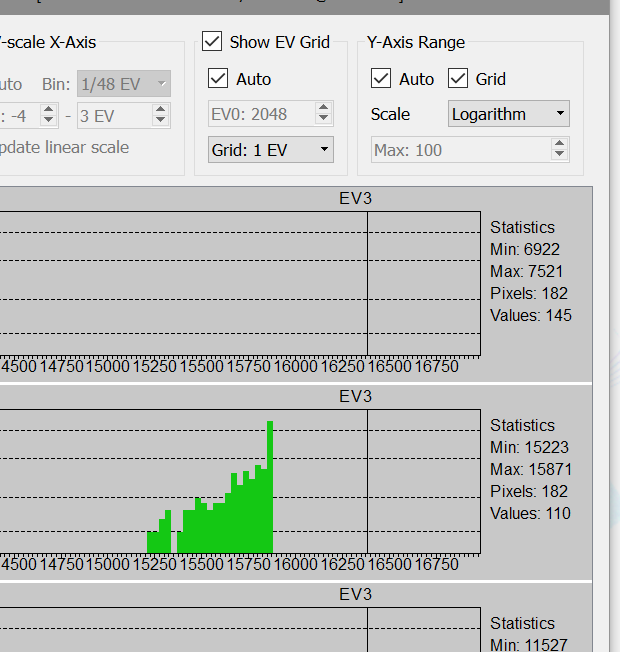
The white balance was different for each image, so I white balanced to about the same visual place. I brought the images into Lr, turned off sharpening and noise reduction, boosted the shadows to +100, and boosted the Exposure to +5. I made 4-way and 16-way pixel shifted versions.
#RAWDIGGER DYNAMIC RANGE ISO#
My next move was to make a seven-stop underexposed image of my bookcase with the GFX 100S and the 30 mm GF lens at f/5.6 and ISO 1000. But that’s sort of an apples to oranges comparison, since the pixel shift image is in a CIE color space, and the raw image is not. If we make prints of the same size from the 16-way and single-shot images, the noise in the 16-way image will be reduced by 1 stop, so, when compared to the single-shot image we should call the DR 10.24 stops.īoth pixel shifted images have better DR than their single-shot counterparts. The dynamic range of the all the channels of the 16-way image is 61440/101.5 or so or 9.24 stops. The dynamic range of the single-shot image is 15360/22.3, or 9.43 stops. The 16-way shifted image has 16 bits of precision. The dynamic range of the blue channel of the 4-way image is 61440/17.2 or 11.80 stops. The dynamic range of the green channel of the 4-way image is 61440/14.9 or 12.01 stops. The dynamic range of the red channel of the 4-way image is 61440/16.8 or 11.84 stops. The 4-way shifted image has 16 bits of precision. The single shot image has 14 bits of precision. I used the Fuji pixel shift program to make both 4-way and 16-way DNGs.

I made single and pixel shifted images of the back of the body cap on a GFX 100S at ISO 1000 and 1/100 second with 14-bit precision. That didn’t fit with what I remembered, but I hadn’t done any quantitative testing.

A Facebook user said that there were no similar improvements with Fuji’s GFX pixel shift. I have previously demonstrated the dynamic range increases that come with Sony a7RIII pixel shift.


 0 kommentar(er)
0 kommentar(er)
